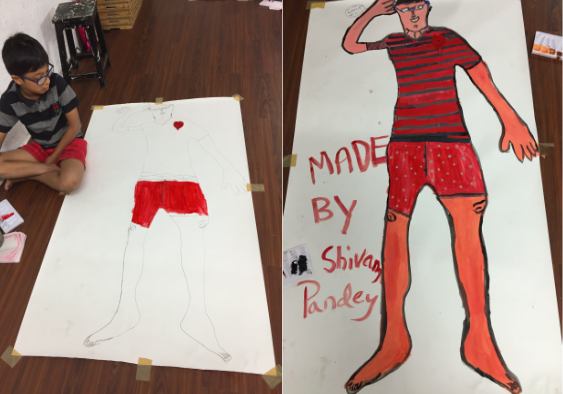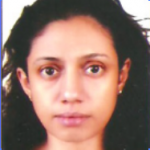
This is Geeta. She has two children – Jigar and Shaurya. Jigar is a 14-year-old boy with multiple developmental defects – poor physical tone and impaired cognitive development. This means he can never live an independent life. Her younger son Shaurya who is ‘normal’, attends a regular school but also has to attend tuitions post-school because both parents are uneducated and cannot guide him. Geeta’s husband works as a security guard in a high rise. Geeta herself supports the family by working as a domestic staff in a high income house-hold. She is fatigued all the time. She balances the demands of an insensitive and demanding employer and caring for her two boys. She cannot afford autorickshaws or even buses, so she walks the distance between the two schools, tuitions and home often slowing down to keep pace with Jigar. The only solace in her life is the unconditional love she gets from her children.
This is Shivam. Shivam’s father drives an autorickshaw for a living. Shivam was born with a cleft palate and very weak eyesight. He also exhibits signs of being on the Autism spectrum. Hyperactive and disruptive, Shivam is often rejected by his peer group and punished constantly by his teachers. Yet he is happiest when he gets an entire hour to paint, create, visualise and express himself. Shivam is a visual and kinaesthetic learner, but presents as ADHD (Attention Deficit Hyperactivity Disorder) because he has to fit into the small box created for children like him.
Geeta and Shivam are people from the marginalised sections of society. I am an arts based therapist and they are part of the ABT group therapy sessions, conducted by me.
What is Arts Based Therapy (ABT)?
Arts Based Therapy is an evidence-based methodology where different art forms are used as modalities to heal an individual or a group, based on their therapeutic goals. ABT encompasses all art forms – visual artforms like painting, drawing, clay modelling; rhythm and music; movement and dance, story-telling and drama. The beauty of ABT is that it is not language dependent and so accessible to anyone. The philosophy of ABT is deeply based in the Buddhist school of thought. It believes that all human life is suffering. But by shifting our thought patterns, it is possible to live a more positive life.
A great schism exists in our world. Capitalisation and globalisation have impacted all of us but not everyone has been affected positively. The differences between the haves and have-nots are getting increasingly wider. The intensive spread of social media and technology means we can all see the same things. Yet access to resources is limited to only those who have the capability to afford it. The rest of the world is gazing with their noses stuck to the glass… when the needs and desires that arise from such exposure cannot be met, there is inevitable anger, frustration and misery. When nearly 60% of the city’s population lives in slum situations, it is inevitable that there will be mental health issues created by these external circumstances. But there is nobody to listen to the poor, the underprivileged, the monthly wage earners – the domestics, the auto drivers, the street vendors. They live with a sense of resignation, an awareness that life will not get better for them. Their silent screams will always go unheard.
When we contemplate that the majority of Indians live in these circumstances and we simply take this for granted, we do not realise that as a country we are dealing with a festering mental health crisis. They may not even be aware that they are struggling with mental health issues because human nature is to resort to substance abuse (alcohol, tobacco, ghutka, junk food) for stress relief. Dealing with the consequences of the somatic results of mental sickness therefore places a huge drain on our heavily burdened and understaffed public health systems.
ABT for the underprivileged
Art Based Therapy is a form of therapy where clients explore their inner emotions, patterns and behaviours through artistic mediums. Body maps, mandalas and zentangles are some of the commonly used tools to bring about a greater self-awareness and mindfulness to the stressed individuals. There is no rigidity and it is a safe space for improvisation and creative self-expression. ABT sessions encourage music and movement to create positive energy.
As an ABT practitioner, my key area of focus is adolescent underprivileged children. The global need for all adolescents is to develop strong minds and bodies, impulse control, balanced peer group interactions and a core set of values and moral framework to keep them on a steady path towards adulthood. It is especially challenging for under-privileged children because the education they can access is often inadequate. Also, all of us are born with multiple intelligences – but we may not be able to develop the very intelligences that help us stand out and be an individual, not a drone. Children who cannot learn the traditional way are labelled slow learners, hyperactive, etc.
Through music, drumming, drama and movement, a very positive space is developed for the group in need. By exposing them to different ways of learning through ABT, we can help them create a sense of inner balance. Healing and restoration to our original integrated self in a joyous manner is the goal of ABT.


 [/column]
[/column]